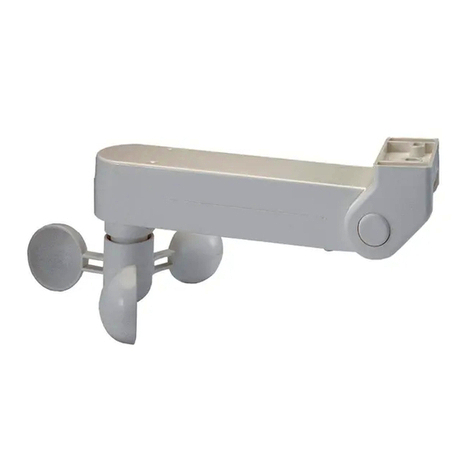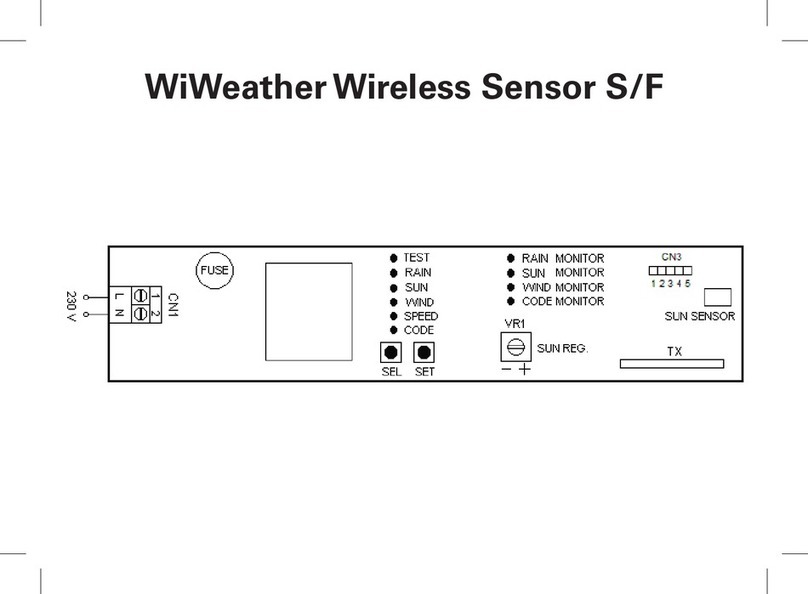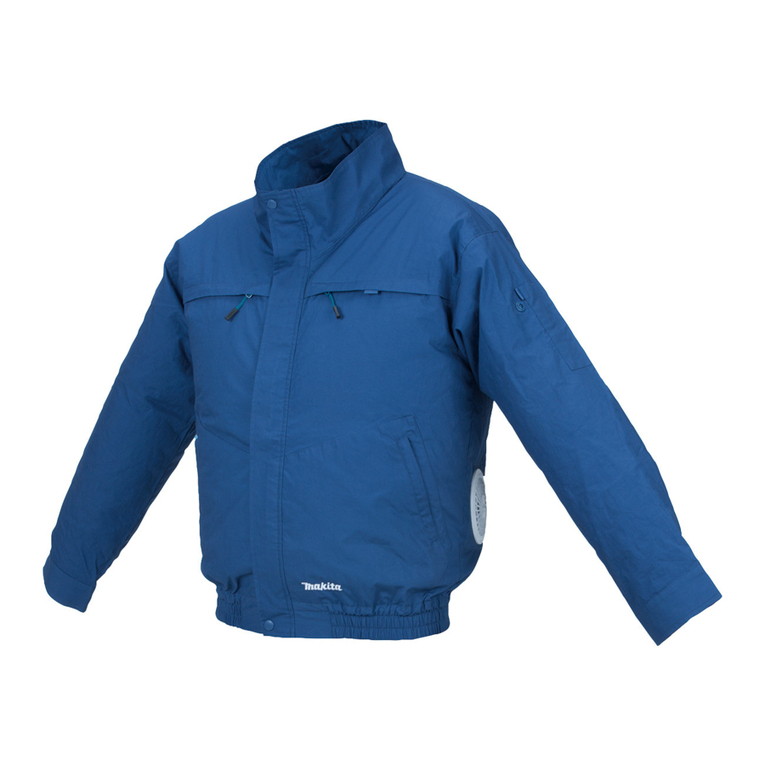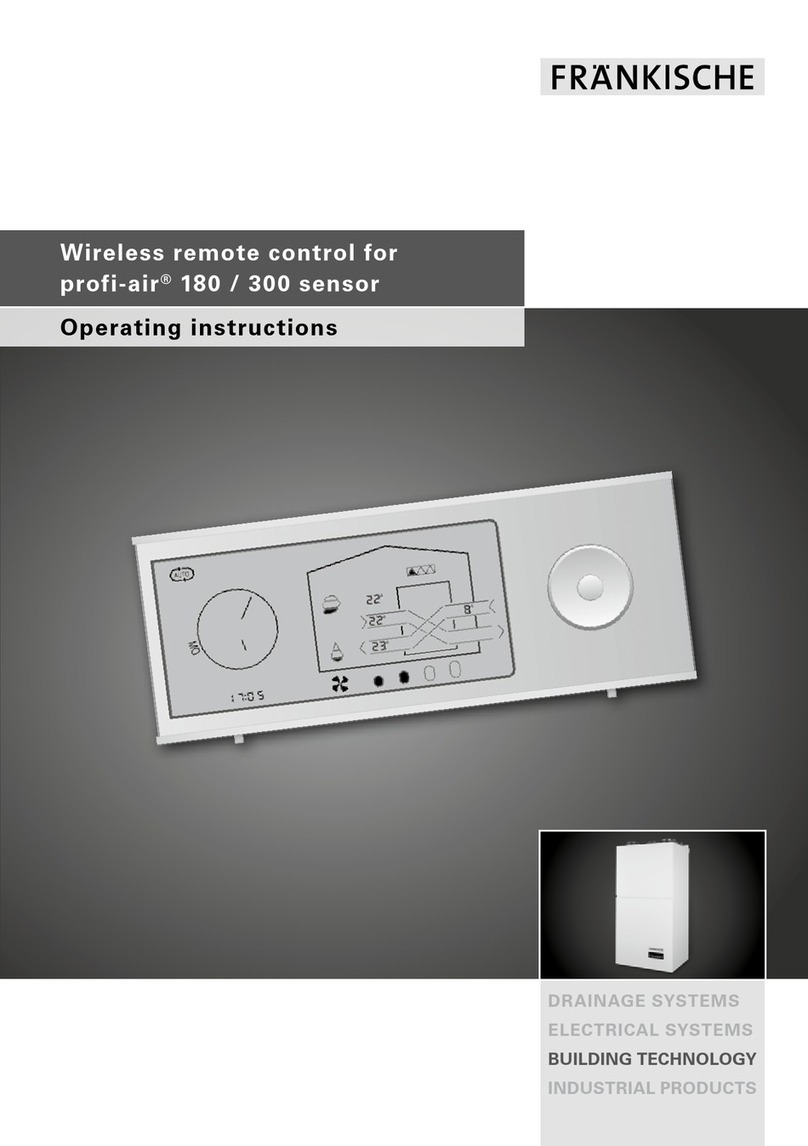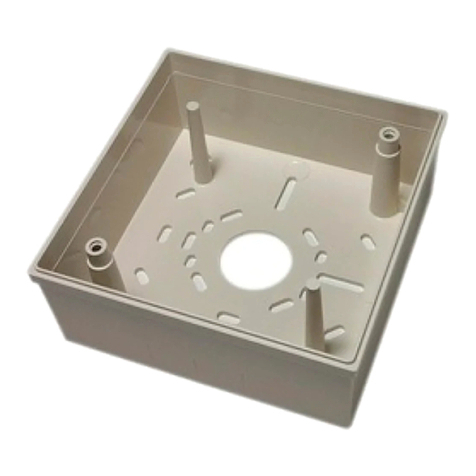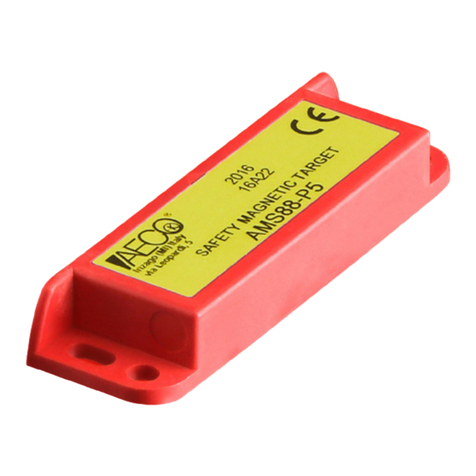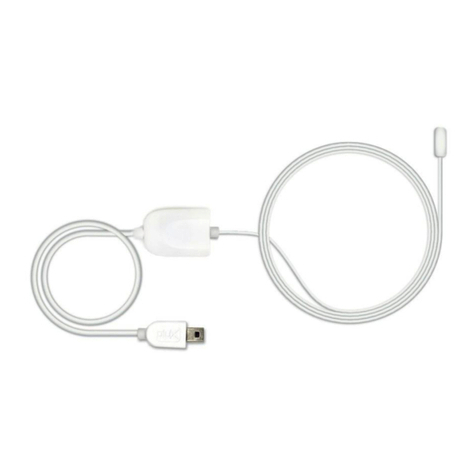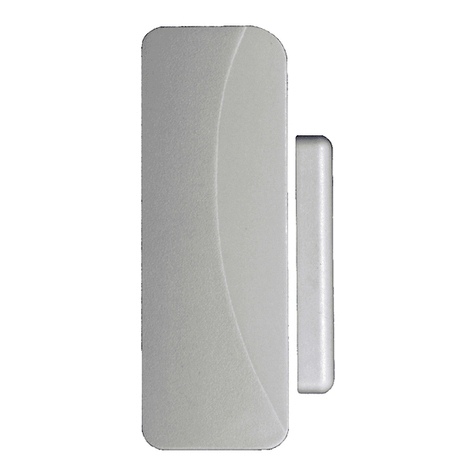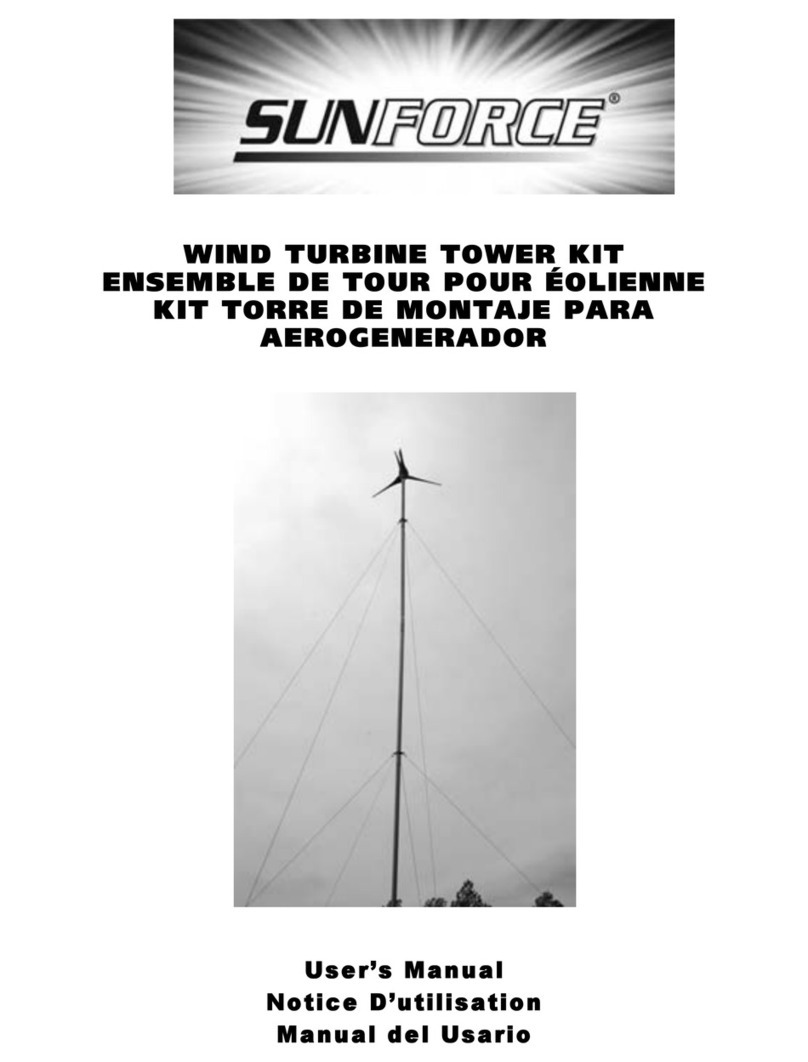Seav WiWeather Series User manual

WiWeather Wireless Sensor
Wind, Sun and Rain Wireless Sensor to be coupled with
STATEUROP electronic control units for the automation of
rolling window shutters and sun blinds.
Mod. WiWeather 433 : 433,92 MHz
Mod. WiWeather 868 : 868,3 MHz
TECHNICAL DATA
Power supply: 230V~ 50/60Hz 3W max.
Working temperature: 10÷55°C
Working frequency: see model
Sensitivity Anemometer: 5 ÷ 40 Km/h
Sun Sensor Sensitivity: 5 ÷ 40 Klux
Packaging dimensions: 240x185x110 mm.
Container: PC UL94V 0 ( IP54 )
CONNECTIONS OF THE CN1 TERMINAL OARD
1: 230V~ Line input (Phase).
2: 230V~ Line input (Neutral).
INITIAL FUNCTIONING CONDITION
The device can only work in conjunction with one or more
STATEUROP electronic control units prearranged for radio re
ception of information relating to the state of the sensors. For
the functioning, it will be necessary to carry out the program
ming operation of the Wireless Sensor on the control unit to
which it will be coupled (see par. “CODE Sending of Radio
Identifier” ).
In the default factory setting, each Wireless Sensor example
produced has a different identifier.
WIND SENSOR FUNCTIONING
The device will send to the control unit to which it has been
coupled, a closing control every time the set Wind threshold is
exceeded.
SUN SENSOR FUNCTIONING
The device will send to the control unit to which it has been
coupled, a downward control after 10 minutes of brightness
higher to the threshold selected by means of the VR1 trimmer
and displayed through the switching on of the SUN MONITOR
LED; it will send an upward control after 10 minutes of bright
ness lower than the selected threshold.
Regulation of sensitivity to the Sun ( 5
÷
40 Klux )
The device allows to regulate the intervention threshold due to
brightness, by means of the VR1 trimmer. The switching on of
the SUN MONITOR LED on the device indicates that the Sun
intensity exceeds the selected intervention threshold, in this
way we will have a reference to the current light conditions to
establish the desired one.
RAIN SENSOR FUNCTIONING
The device will send to the control unit to which it has been
coupled, an upward control as soon as the sensitive part of the
rain sensor is wet by water, signalled through the switching on
of the RAIN MONITOR LED.
PROGRAMMING KEYS AND INDICATOR LED
SEL Key: selects the type of function to memorise, the choice
is indicated by the flashing of the LED. By repeatedly pressing
the key, it is possible to position oneself on the desired func
tion. The selection remains active for 15 seconds, displayed by
the flashing LED, after which the control unit returns to the ori
ginal status.
SET Key: carries out the programming of the function chosen
with the SEL key.
Indicator LED
LED on: option memorised.
LED off: option not memorised.
LED flashing: option selected.
---------------------- MAIN MENU -----------------
LED Reference LED Off LED On
1) CODE Send RFID = OFF Send RFID = ON
2) SPEED Wind Safety 25 Km/h Pgm. Wind Safety
3) WIND Wind Safety = OFF Wind Safety = ON
4) SUN Sun Sensor = OFF Sun Sensor = ON
5) RAIN Rain Sensor = OFF Rain Sensor = ON
6) TEST Test Sensors = OFF Test Sensors = ON
1) CODE (Sending of Radio Identifier)
The coupling of the Wireless Sensor to a control unit must be
carried out as follows: activate the Wireless Sensor program
ming procedure on the control unit (see control unit technical
manual), with the SEL key position yourself on the flashing of
the CODE LED and press the SET key for about 1 2 seconds:
at the same time, the Sensor will send an identifying code sig
nalled by the flickering of the CODE MONITOR LED.
Check that in the coupled control unit there is confirmation of
the occurred Sensor programming (see control unit technical
manual). In this way, the Wireless Sensor is coupled to the
control unit and it will send to the same controls dependant
upon the meteorological conditions.
Repeat the operation in case the same Sensor is to be pro
grammed on other control units.
2) SPEED (Programming of Wind Safety threshold)
Display of the programmed Wind threshold
The display of the wind Safety threshold selection is carried out
as follows: with the SEL key position yourself on SPEED LED,
the LED will start to double flash for the number of times equal
to the wind Safety threshold in the memory (to every double
flash of the SPEED LED corresponds an increase of 5 Km/h),
(example: 5 flashes of SPEED LED = 25 Km/h).
Selection of the wind Safety threshold from 5 to 40 Km/h
The sensor is supplied with the wind Safety intervention
threshold equal to 25 Km/h (SPEED OFF LED).
The programming of the wind Safety threshold selection is car
ried out as follows: with the SEL key position yourself on
SPEED LED and press the SET key to start the programming
procedure: at the same time, the SPEED LED will start to
double flash; (every double flash of the SPEED LED corres
ponds to an increase of 5 Km/h), once the desired threshold
has been reached, press the SET key; the selected value will
be memorised at the same time and the SPEED LED will re
main on (example: 5 double flashes of SPEED LED = 25
Km/h).
It is possible to repeat the operation in case of an incorrect pro
gramming.
1Rev. 1.0 20/02/09
G

3) WIND (Wind Sensor ON/OFF)
Deactivation of the Wind Sensor
The device is supplied with the Wind Sensor enabled (WIND
ON LED).
The deactivation of the Wind Sensor can be carried out as fol
lows: with the SEL key position yourself on the flashing of the
WIND LED and press the SET key for an instant: at the same
time, the WIND LED will switch off and the Wind Sensor deac
tivation will be complete. It is possible to repeat the operation
to activate the Wind Sensor.
4) SUN (Sun Sensor ON/OFF)
nabling the Sun Sensor
The device is supplied with the Sun Sensor disabled (SUN
OFF LED).
The enabling of the Sun Sensor can be carried out as follows:
with the SEL key position yourself on the flashing of the SUN
LED and press the SET key for an instant: at the same time,
the SUN LED will remain on and the Sun Sensor enabling will
be complete. It is possible to repeat the operation to disable
the Sun Sensor.
5) RAIN (Rain Sensor ON/OFF)
Deactivation of the Rain Sensor
The device is supplied with the Rain Sensor enabled (RAIN ON
LED).
The deactivation of the Rain Sensor can be carried out as fol
lows: with the SEL key position yourself on the flashing of the
RAIN LED and press the SET key for an instant: at the same
time, the RAIN LED will switch off and the Rain Sensor deactiv
ation will be complete. It is possible to repeat the operation to
activate the Rain Sensor.
6) TEST (Test Sensors ON/OFF)
The device is supplied with the Wind Sun Rain Test Sensors
disabled (TEST OFF LED).
The activation of the Wind Sun Rain Test Sensors can be
carried out as follows: with the SEL key position yourself on the
flashing of the TEST LED and press the SET key for an instant:
at the same time, the TEST LED will switch on and the activa
tion of the Wind Sun Rain Test Sensors will be complete. It
is possible to repeat the operation to disable the Test Sensors.
Anemometer Test: manually rotate the Anemometer blades
and, at the same time, the WIND MONITOR LED will switch
on, signalling the radio sending of the necessary information to
the previously configured coupled control unit (signalled by the
flickering of the CODE MONITOR LED), controlling the ascent
for 5 sec.
Sun Sensor Test: rotate VR1 trimmer as far as possible clock
wise (in + position) and, at the same time, the SUN MONITOR
LED will switch on, signalling the radio sending of the neces
sary information to the previously configured coupled control
unit (signalled by the flickering of the CODE MONITOR LED),
controlling the descent for 5 sec. Rotate the VR1 trimmer VR1
anti clockwise (in position) and, at the same time, the SUN
MONITOR LED will switch off, signalling the radio sending of
the necessary information to the previously configured coupled
control unit (signalled by the flickering of the CODE MONITOR
LED), controlling the ascent for 5 sec.
Rain Sensor Test: wet the sensitive part of the Rain Sensor
and, at the same time, the RAIN MONITOR LED will switch
on, signalling the radio sending of the necessary information to
the previously configured coupled control unit (signalled by the
flickering of the CODE MONITOR LED), controlling the ascent
for 5 sec.
Completed the test, ensure to have dried the sensitive part of
the rain sensor before using the control unit in the normal func
tioning.
SENSORS MONITOR
The control unit presents four "monitor" indicator LED with
which it is possible to display the radio transmission of the in
formation relating to each sensor.
---------------------- LEDS MONITOR -----------------
LED Reference LED Off LED On
CODE MONITOR Info = OFF Info = ON
WIND MONITOR Info = OFF Info = ON
SUN MONITOR Info = OFF Info = ON
RAIN MONITOR Info = OFF Info = ON
RESET
In case it is necessary to reset the control unit default factory
configuration, press the SEL and SET keys together so that all
indicator LED switch on and off at the same time.
2Rev. 1.0 20/02/09

IMPORTANT FOR THE INSTALLER
The devi e must never be used by hildren or persons with
redu ed physi al-psy hologi al abilities, unless supervised or
trained on the fun tioning and the use modalities.
- Do not allow hildren to play with the devi e.
- ATTENTION: keep this instru tion manual and respe t the
important safety pres riptions ontained herein. The non om-
plian e with the pres riptions may ause damages and seri-
ous a idents.
- Frequently examine the plant to dete t any signs of dam-
aging. Do not use the devi e if a repair intervention is ne es-
sary.
Attention
All operations whi h require the opening of the asing ( ables
onne tion, programming, et .) must be arried out by expert
personnel during installation. For any further operation whi h
requires the asing to be re-opened (re-programming, repair or
installation amendments) onta t the after-sales assistan e.
STATEUROP declares that the products:
WiWeather 443 - 868
are in compliance with the specifics of R&TTE
99/5/EC, EMC 2004/108/EC, LVD 2006/95/EC Directives.
3Rev. 1.0 20/02/09
IMPORTANT FOR THE INSTALLER
- The devi e must be permanently onne ted to the power
supply network and not have any type of se tioning devi e of
the 230Va ele tri line, it will therefore be under the are of
the installer, to provide the plant with a se tioning devi e. It is
ne essary to install a single-phase swit h with over-voltage
ategory III. It must be positioned so as to be prote ted
against a idental losures.
- For onne tions (power supply), use flexible ables under in-
sulating sheath in harmonised poly hloroprene (H05RN-F)
with minimum se tion of the ondu tors equal to 0.75 mm2
- The onne tion ables must be fixed by assembling able
lamps supplied with the produ t.
- The devi e, at the time of installing, must be arefully man-
aged, ensuring to have assembled
the omposing parts orre tly. Pay parti ular attention to
the erami plate and to the onne ting flat. When re- losing
the box, the latter must fold, on itself, in an orderly manner.
- It is very important to establish the exa t lo ation so that
the produ t is exposed to the same atmospheri agents as
when it is ontrolled.
- Ensure that the devi e remains in lined at about 45 de-
grees (fixing area at top, round extremity of the box at bot-
tom).
- Do not paint or varnish the sensitive surfa e of the ontrol
unit.
- The dirt whi h builds up on the rain sensor surfa e limits
the sensitivity: it is therefore re ommended to lean it on e or
twi e a year with a damp loth, after having dis onne ted the
automation.
−For a orre t fun tioning, it is re ommended to always use
only one devi e for one or more ontrol units installed in an
a tion range of 20 meters.
−Always arry out the tests of the sensors to ensure the or-
re t fun tioning of the installed system.
This manual suits for next models
2
Other Seav Accessories manuals
Popular Accessories manuals by other brands
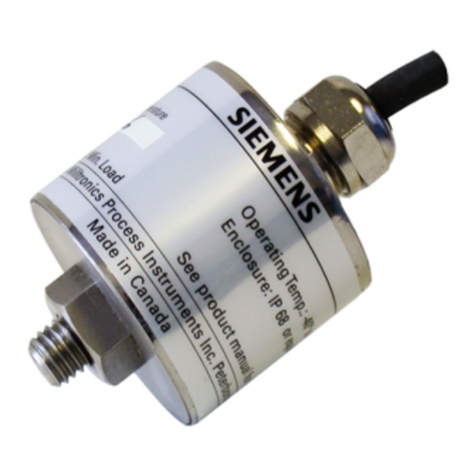
Siemens
Siemens SITRANS AS100 instruction manual
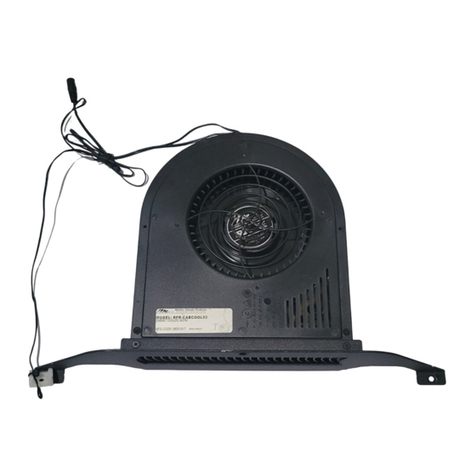
Middle Atlantic Products
Middle Atlantic Products Display Station Series installation instructions
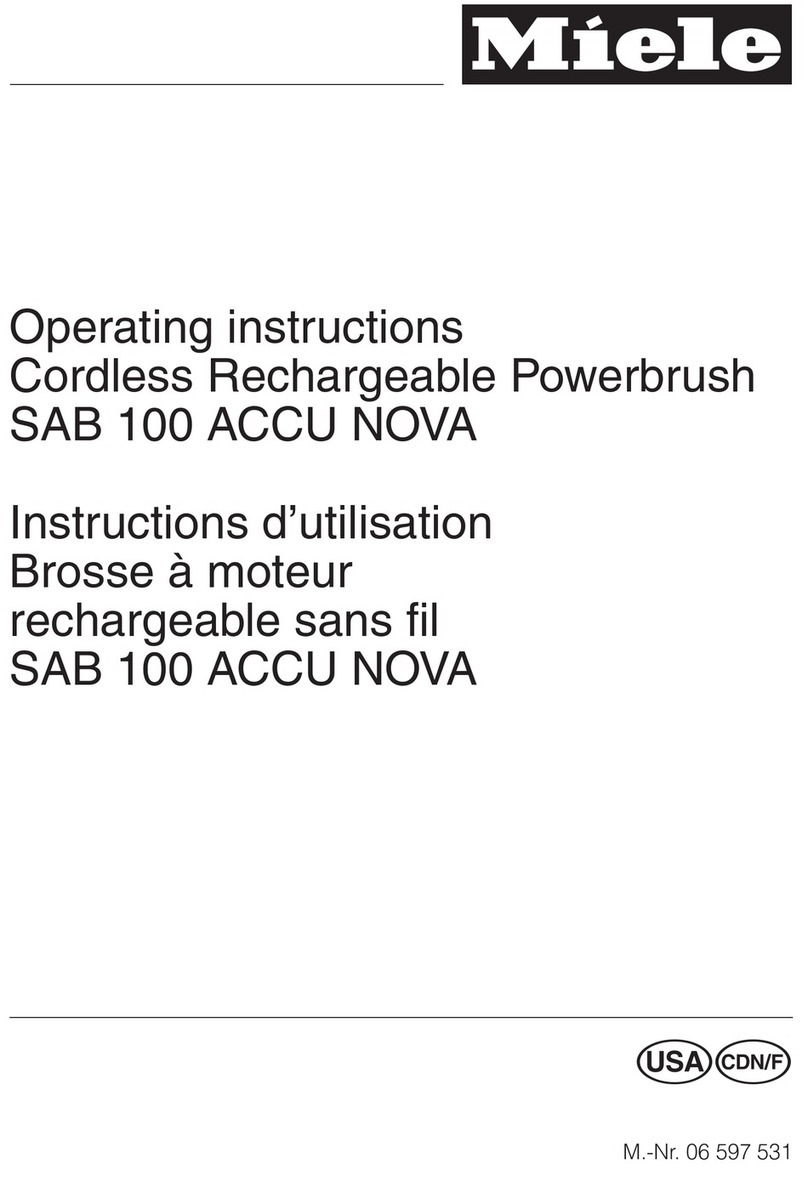
Miele
Miele SAB 100 ACCU NOVA operating instructions

IFM Electronic
IFM Electronic GF711S Original operating instructions

PCB Piezotronics
PCB Piezotronics R480E09 Installation and operating manual
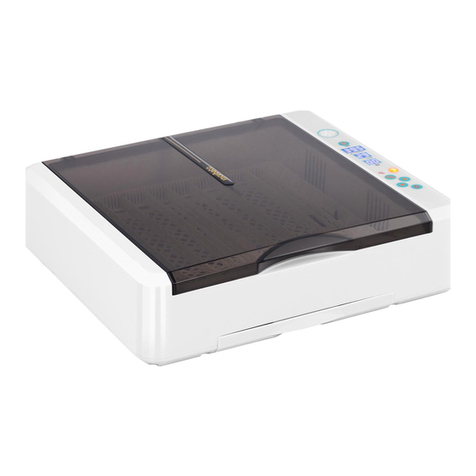
incubato
incubato IN-36DDI user manual
